
The DC-to-AC converter serves a fundamental role in modern electrical systems. It converts the direct current (DC) generated into an alternating current (AC). As we delve into the topic of inverters, we are going to discuss their circuits, PCBA construction, and troubleshooting in this article!
In this article:
Part 1: DC vs AC Part 2: DC to AC converter – the Inverter Part 3: DC-to-AC Converter Circuits Part 4: Inverter PCBA Part 5: Troubleshooting DC-to-AC Inverter Part 6: Troubleshooting DC-to-AC InverterDC vs AC
Direct Current (DC) is the type of current that flows consistently in one direction. Direct current/voltage is commonly generated by sources like solar panels and stored in batteries. The following image shows a DC signal, which is represented on the graph by a straight line.
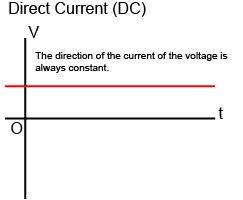
DC voltage offers several advantages, such as decreased circuit delays. Its unidirectional flow eliminates fluctuations within the circuit. The steady flow of power in DC results in efficient power usage with no reactive power. This efficiency not only conserves energy but also facilitates cost savings. Additionally, DC can be efficiently stored in batteries and capacitors. However, direct current has a major drawback in the transmission and distribution of electrical power.
On the other hand, Alternating Current (AC) alternates between positive and negative polarities, causing electrons to change direction periodically. This alternating flow is represented by a wave pattern on a graph, as shown in the next figure. AC electricity is primarily produced by alternators in various power plants and is the international standard for home appliances and electric machines.
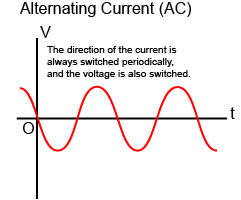
AC power transmission from power plants to residential areas requires minimizing power losses over long distances. However, for consumption in residential settings, the voltage needs to be lowered to around 120V-240V. Despite its benefits, AC power demands higher voltages due to its fluctuating nature, which in turn leads to energy wastage.
DC to AC converter – the Inverter
In many renewable energy systems, such as solar panels and generators, power is generated in the form of Direct Current (DC). But as discussed earlier, the AC power proves itself more efficient for the transmission and distribution over extended distances. Therefore, it becomes essential to convert the generated DC power into AC for utilization in household appliances and various electrical equipment.
A DC-to-AC converter, also referred to as an inverter, is an electronic device designed to transform direct current (DC) into alternating current (AC). Inverters come in two main types: Modified sine wave (MSW) and Pure sine wave (PSW). The modified sine-wave inverters produce an approximation of a sine wave. And the pure sine-wave inverters generate a perfect sine wave. The challenge in converting DC to AC lies in transforming a DC signal into an alternating wave with minimal loss. After the conversion, it is mostly necessary to increase the voltage, which is done by utilizing transformers.
DC-to-AC Converter Circuits
There are a number of circuits that are available for converting DC to AC signals. In this section, we are going to discuss the three approaches that convert an input DC voltage to an alternating one.
No 1. Using 555 Timer IC

This DC-to-AC converter is comprised of three primary components:
- A 555 timer circuit
- An LC (Inductor-Capacitor) circuit
- A negative clamper with positive biasing
The DC input signal is applied to the 555 circuit. The 555 timer circuit converts the DC input into a square wave with a 50% duty cycle. Then, this square wave goes to the LC pair connected right after the 555 IC. This LC circuit refines the shape of the square wave into a more sinusoidal shape. At last, the clamper circuit introduces an offset to the output of the LC circuit without altering its shape. Hence, we get an output signal that resembles a true AC signal centered around 0V.
No 2. Using CD4047
This circuit can deliver a maximum output of 60 watts by utilizing CD4047 and MOSFET transistors. Its simplicity and compactness make it easy to construct and ideal for various applications. The following circuit converts 12V from a battery into 220V alternating current (AC) with a power output of 60 watts.

The CD4047 operates as an Astable multivibrator circuit to generate a square wave of 50Hz frequency at pin 10 and pin 11. The values of R1 and C1 determine the output frequency of IC1. The signals from pin 10 and pin 11 of IC1 are always in opposite polarity. These signals are then fed into MOSFET transistors (Q1 and Q2), which form a complementary circuit to amplify the signal. The amplified signal is then transmitted to Q3 and Q4, which function as high-frequency switches, driving Q5 and Q6. Upon receiving the amplified signal, Q5 and Q6 amplify it further. Before being sent to transformer-T1, the dual Zener diodes ZD2 and ZD3 serve as protectors against feedback voltage from the transformer. Transformer-T1 uses a center tap to transform the AC 12V from Q5 and Q6 into AC 220V while maintaining the same frequency. This voltage is suitable for powering internal appliances, provided it does not exceed 60 watts.
No 3. Using transistors
The DC-to-AC converter circuit can be composed using transistors as its primary components.
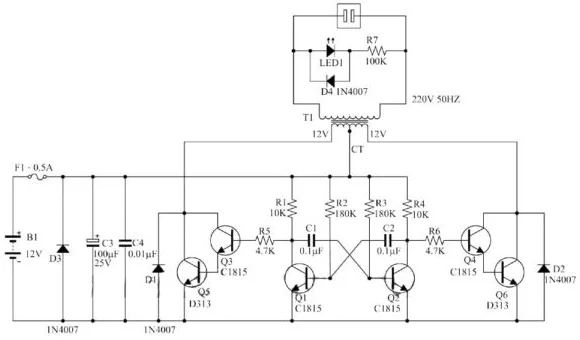
The circuit utilizes a number of transistors to step up the voltage from 12V to 220V through a transformer. The oscillator circuit generates a 12V AC signal, which is then applied to the transformer for voltage amplification. This circuit can power an output of up to 10 watts. Initially, a 50Hz square wave oscillator generator circuit with Q1, Q2, R1, R2, C1, and C2 is used as an astable multivibrator. However, the low current output of the oscillator cannot directly drive the transformer. Therefore, the power transistors Q3, Q5, and Q4, Q6 are used to amplify the current and drive the 12V to 220V transformer output.
Inverter PCBA
Inverter PCBA (printed circuit board assembly) plays a crucial role in electrical systems by converting DC input from sources like batteries or solar panels into AC power, which is then utilized by various appliances. The PCB performs the functions of rectification, filtering, and regulating the voltage levels. Furthermore, the inverter PCBA incorporates essential safety features to ensure the inverter's reliable operation.
Therefore, the design of an inverter PCB is critical for its performance and reliability. It must be optimized to efficiently convert DC to AC power and regulate output voltage and frequency accurately. The PCB layout and components vary depending on the type and intended application of the inverter. Still, before taking the design to the PCB fabrication, the simulations must be done on software like Proteus, Falstad, Multisim, etc. Factors such as electrical interference, input voltage fluctuations, space constraints, and cooling requirements must also be considered during the design process to ensure reliable performance. For high-quality printed circuit boards, it's essential to consult with a reputable PCB manufacturer like PCBONLINE.
To check the functionality of an inverter PCBA, basic diagnostic tests should be performed using tools like a multimeter or oscilloscope. Specialized tools such as oscilloscopes allow for detailed waveform analysis to identify any faults in components like diodes and MOSFETs. Additionally, specialized testing devices may be necessary depending on the complexity of the issue. The PCB assembly manufacturer PCBONLINE offers comprehensive tests on PCBAs to ensure the optimum quality of the circuit.
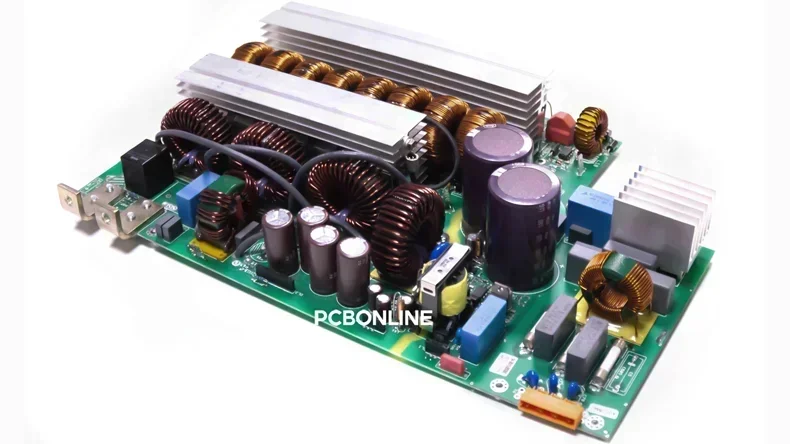
High-power industrial inverter PCBA boards need strong soldering and good heat dissipation due to the large-area THT (Through Hole Technology) production process. Their high requirements on solder fullness, tin intake, and overall heat dissipation system, make its production difficult. PCBONLINE has strong technology capabilities and can make them.
Troubleshooting DC-to-AC Inverter
Like any other circuit board assembly, the DC-to-AC inverter may encounter problems and malfunction. In this case, troubleshooting and rectification of the issues are essential.
In this section, we discuss some common issues and their possible remedies:
No output power- Check the input connections and power source.
- Verify the converter's fuse and replace it if necessary.
- Inspect the converter for any damage or loose components.
Low output voltage- Confirm that the input voltage is within the converter's range.
- Check for excessive load and remove non-essential devices.
- Ensure proper ventilation and cooling to prevent overheating.
Overheating- Remove any obstructions blocking the air vents.
- Decrease the load on the converter.
- Operate the converter in a cooler environment.
Audible noise- Confirm that the converter is securely mounted.
- Inspect for any loose or vibrating components.
- Ensure proper ventilation and cooling for optimal operation.
If you have attempted these troubleshooting steps and your converter continues to experience the same issue, it's advisable to consult the user manual or contact the manufacturer promptly for further assistance.
One-Stop DC/AC Converter PCBA Manufacturer PCBONLINE
If you need one-stop PCB assembly for DC/AC converters or any other electrical or electronic devices, you can work with the EMS (electronic manufacturing service) PCBA manufacturer PCBONLINE. PCBONLINE provides PCB fabrication, component sourcing, PCB assembly, box build assembly, and R&D to meet your custom electronics manufacturing demands at one stop.
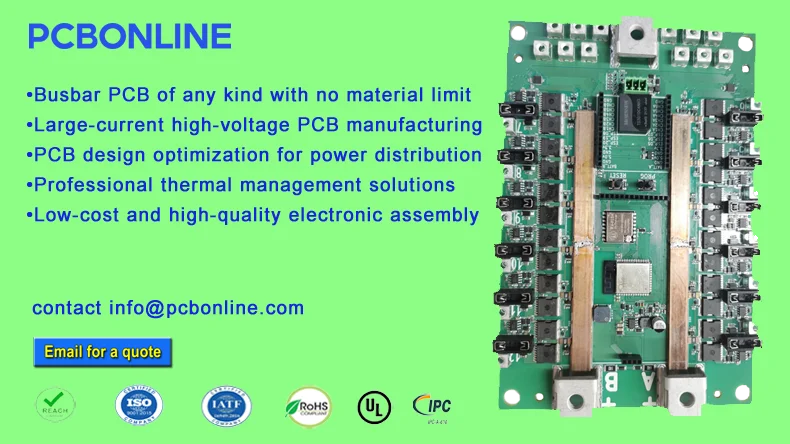
PCBONLINE, founded in 1999, has two large advanced PCB manufacturing bases, one EMS PCB assembly factory, and an R&D team. You can have any converter PCBAs, whether they are DC/AC, AC/DC, DC/DC, AC/AC, etc, manufactured and assembled to be what you need from us.
PCBONLINE has strong manufacturing capabilities and technical experience in high-power industrial inverter PCBA and EV charging piles.
We work hard on details such as jig design, furnace temperature control, and production process design. It is also our advantage in high-power and high-current boards.
We can provide PCBA ODM (original design manufacturing) for your power converter applications and final product box build assembly.
As a source factory manufacturer, we offer the most cost-effective manufacturing for DC-to-AC PCBA and any other power converter boards.
We provide high-quality PCB, PCBA, and box builds certified with ISO 9001:2015, IATF 16949, RoHS, REACH, UL, and IPC-A-610 Class 2/3.
We offer R&D, PCBA samples, and functional testing for free for bulk PCBA production.
Here's a PCBA converter board example from PCBONLINE.
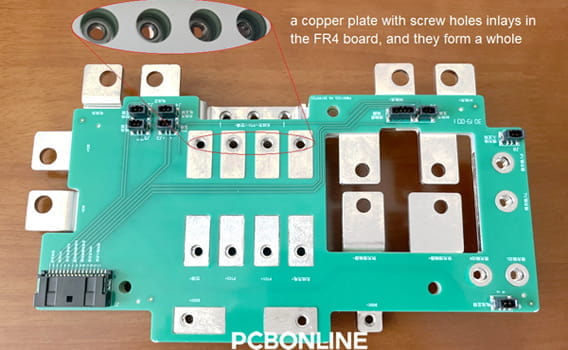
It is a high-power converter board for EV (electric vehicle) charging. Since high-power and high-current fast charging of EV lithium battery packs generates a lot of heat, for safety and reliability, the high-current and low-current electrical networks are designed separately. The copper busbars are responsible for large current conduction and heat dissipation, and the PCB circuit layer (3oz) is responsible for small current and signal conduction. The effective combination of FR-4 and PCB busbars is critical in the PCB production process.
Conclusion
In conclusion, a DC-to-AC converter is crucial in electrical systems. It transforms direct current (DC) into alternating current (AC), allowing the use of electrical power in household appliances and various equipment. Inverters help improve power transmission and distribution. But, like any complex device, they can have issues. Proper troubleshooting is important to fix problems like low voltage, overheating, and power interruptions. To get affordable and high-quality DC-to-AC converters and any other power management boards, you can contact PCBONLINE by email at info@pcbonline.com and cooperate with us.
PCB assembly at PCBONLINE.pdf







